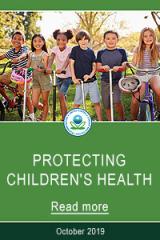From the executive summary:
The U.S. Environmental Protection Agency (EPA) was created in 1970 with the mission to protect human health and the environment. In 1995, EPA began to focus explicitly on the unique vulnerabilities and needs of children with respect to the air they breathe, the water they drink, and exposures to chemicals in places where they live, learn, and play.
Environmental officials increasingly recognize that the differences between children and adults are critical to acknowledge when establishing environmental health protections. Children in all stages of life, from infancy through adolescence, as well as pregnant women, face environmental health hazards in both the natural and built environments. Because children’s neurological, immunological, respiratory, digestive, and other systems are still developing, they are more vulnerable than adults to environmental risk factors. In many cases, their responses are substantially different – qualitatively and quantitatively – from those exhibited by adults. EPA is committed to assuring newborns have the best possible start in life by seeking to decrease exposures during vulnerable life stages and improve children’s environmental health outcomes.
Read the full booklet, below.
You may need a PDF reader to view some of the files on this page. See EPA’s About PDF page to learn more.- Protecting Children's Health October 2019 (PDF)(36 pp, 12 MB)

